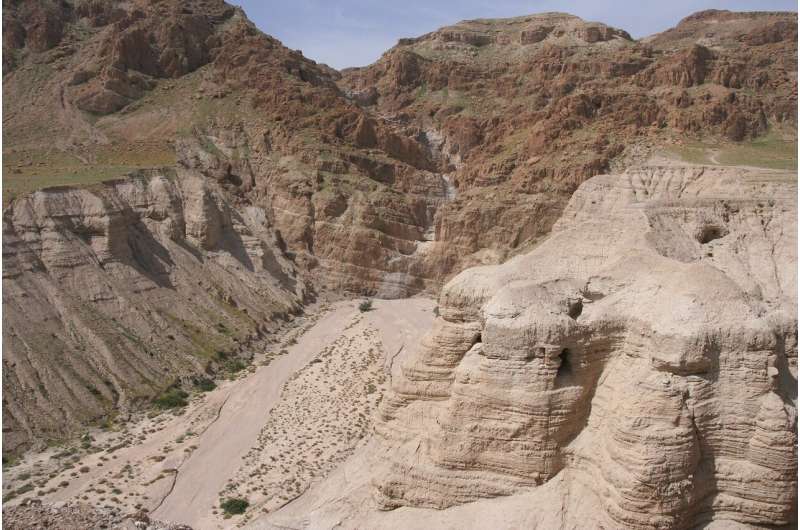March 18, 2020 report
Dead Sea Scroll fragments in The Museum of the Bible found to be fake

A team of workers at Art Fraud Insights, LLC, has found that all of the Dead Sea Scroll (DSS) fragments housed at the Museum of the Bible in Washington D.C. are fake. They have published their findings on their company website.
The Dead Sea scrolls are a collection of scrolls found in the Qumran Caves near the shore of the Dead Sea. They were discovered by a Bedouin shepherd in 1946. Since that time, the scrolls have been identified as ancient Jewish manuscripts created over the last three centuries BCE and the first century CE. They are housed in the Shrine of the Book on the grounds of the Israel Museum.
Officials of the Museum of the Bible obtained 16 fragments of what were claimed to be additional DSS fragments sometime after 2002. Soon thereafter, other institutions that had obtained samples from the same collections found evidence that they were not authentic DSS fragments. That finding cast doubt on all of the others. But it was not until 2017 that the Museum of the Bible opened its doors, proudly showing off its collection of DSS fragments. The next year, some of them were tested by Germany's Federal Institute for Materials Research and were found to be fake, as well. That led the museum to ask the team at Art Fraud Insights, LLC to examine all of their fragments.
After several months of work, the team presented their results, which the Museum of the Bible made public. They had found that the material makeup of the collection did not match that of the original DSS fragments—they appeared to be ancient leather rather than parchment. More importantly, they had found that modern ink had been used to print words on the old material fragments—it had pooled on the old dried leather. The group also found evidence of clay mineral dust similar to that found in the Qumran Caves that had been applied after the inking had been done—evidence of an attempt to cover up the fake materials below. The final verdict: the fragments were not only fake, but had been created for the purpose of deception.
It is still not known who went to such great lengths to create the fake DSS fragments.
More information: museumofthebible.org/dead-sea-scroll-fragments
© 2020 Science X Network



















